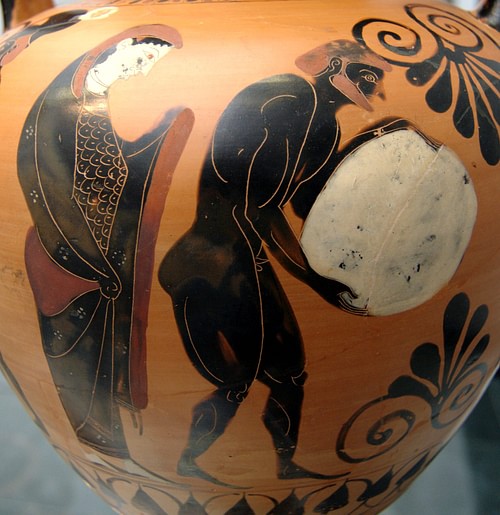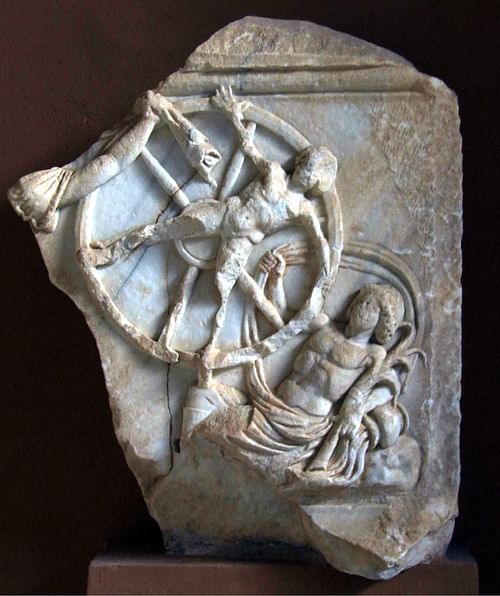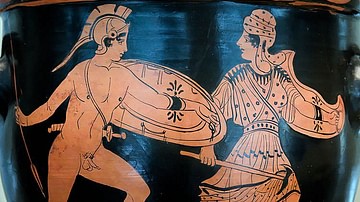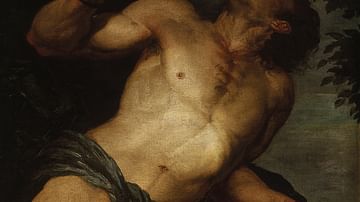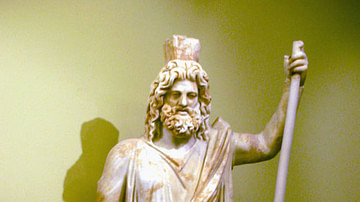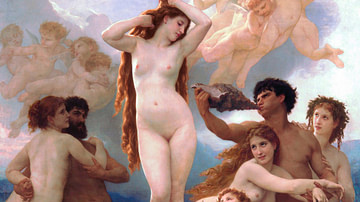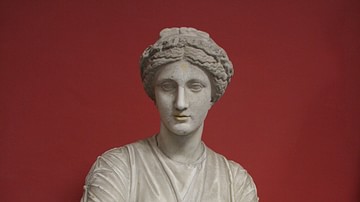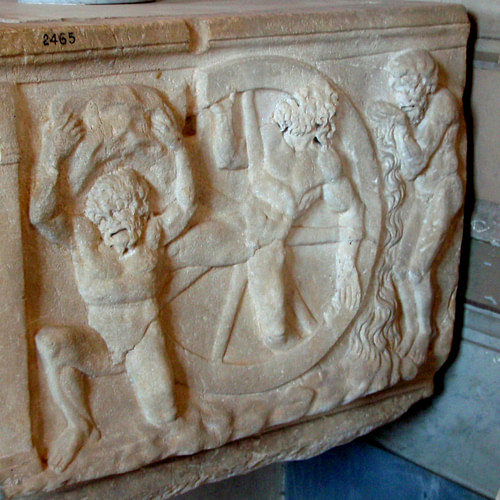
In Greek mythology, Tartarus was the lowest point of the universe, below the underworld but separate from it. Tartarus is best known from Hesiod's Theogony as one of the first beings to come into existence in the universe and also as the place of entombment for the monsters, the Titans, and in later myths, for mortals who committed unforgivable sins. The punishments for each mortal was different and depended on the crime they committed. Although, as a deity, he is the father of Typhon, Tartarus is not depicted any other way than a dark abyss used as a prison, therefore there are not many myths or stories of the primordial god.
Origins in Hesiod's Theogony
At the beginning of the universe, there was Chaos, which meant something like 'abyss' and did not carry the same connotations of confusion or disorder as it does now. Chaos was personified as a female primordial deity and was closely followed by three other entities emerging independently from Chaos: Gaia (Earth), Eros (Desire), and the misty gloom of Tartarus. 'Misty Tartarus', as described by Hesiod (c. 700 BCE) was "as far below the earth as heaven is from the earth" (722-25). Hesiod describes Tartarus as a vast chasm, both dismal and dank and a place of decay. It was the lowermost region of the universe, a separate entity lower than Hades. When Zeus and the Olympians overthrew Cronus and the other Titans for supremacy over the earth, they were entombed not just in Hades, which was the final resting place for mortal souls, but Tartarus, the nether region of the universe which was used as a place for banished monsters and gods alike.
Tartarus and Gaia had a child, Typhon. Typhon was a giant monster with 100 snakeheads and eyes full of fire. Out of every head came different, indescribable sounds of lions, packs of hounds, bellowing bulls, and hissing serpents. Pottery depicting Typhon shows him with wings, and he was incredibly powerful. According to Apollodorus, Tartarus and Gaia were the parents to Echidna, the wife of Typhon who was half woman, half serpent. They were known as the father and mother of monsters.
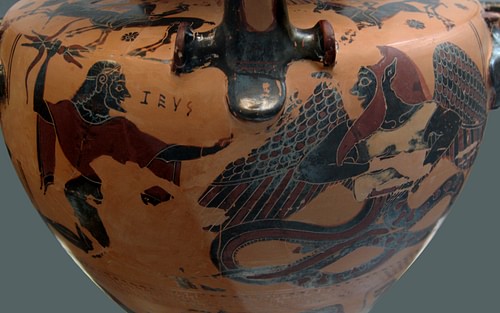
Later Mentions of Tartarus
According to Plato (428/7-348/7 BCE) in his Gorgias, the souls who were deemed impious and unjust by the judges of the dead (Rhadamanthus, Aeacus, and Minos), would be sent to Tartarus and eternally damned. In his Phaedo, Plato states that all of the rivers run through the chasm of Tartarus, and then they flow back out of it through the earth.
Virgil (70-19 BCE) in his Aeneid diverts from Hesiod's description of equal distance between Heaven, Earth, and Tartarus, noting that "then the abyss, Tartarus itself plunges headlong down through the darkness twice as far as our gaze goes up to Olympus rising toward the skies" (6.670-2). He also describes Tartarus not as misty or gloomy, but wicked. Virgil describes a large gate preventing entry or escape from Tartarus, guarded by the 50-headed Hydra.
Residents of Tartarus
The residents of Tartarus were subjected to punishments which fit their crimes, all except the first residents of the chasm. The one-eyed Cyclopes and the 100-handed Hecatonchires were the children of Gaia and Uranus along with the Titans. As soon as the monsters were born, Uranus hid them away in the depths of Tartarus, which made them Tartarus' first prisoners. After Zeus and the Olympians defeated the Titans in the Titanomachy, many of them were imprisoned in Tartarus with their siblings, the Cyclopes and the Hecatonchires.
The Lydian King Tantalus has three different versions of his mischief which landed him a spot in Tartarus, but it is the most popular one which is the most outrageous. Tantalus wanted to see if the gods truly did know everything and cooked a stew with his own son Pelops in it to see if they would figure it out. The gods immediately sensed something wrong all except Demeter who was still upset about her missing daughter Persephone and ate some of the stew with Pelops' shoulder. Tantalus was doomed to everlasting hunger and thirst. Tantalus was made to stand in a pool of water he could not drink from and under a fruit tree which he could never pick a piece of fruit off.
Sisyphus was the founder and first king of Corinth, and although his myth has a number of different versions, often with contradictions between them, it is his punishment in Tartarus which has stayed certain. Sisyphus cheated death not once, but twice with his wicked cunning. By the third time he died and arrived in the misty Tartarus, Zeus intervened to make sure no other mortal was inspired by Sisyphus and his tricks to dodge death. He was cursed to continuously roll a huge boulder to the top of a hill only to roll back to the bottom.
Ixion made the foolish mistake of trying to seduce Hera, the wife of the king of the gods, Zeus. Although he was tricked into making love with a cloud instead of Hera (thus creating the race of centaurs), he was cursed in Tartarus to be tied to a spinning wheel of fire.
The gigantic Tityos was the son of Zeus and Elara and was killed by Artemis and Apollo after he tried to rape their mother Leto, at the request of Hera. When he descended to Tartarus, he was stretched out to have his liver eaten every day by two vultures, which would grow back each night to be devoured again the next day.
The Danaids were the 50 daughters of Danaus and were married off to the 50 sons of Danaus' brother and a mythical king of Egypt, Aegyptus. Danaus ordered his daughters to kill their husbands, and all but one, Hypermnestra committed the crime. Lynceus, the only surviving son ended up killing Danaus in revenge, and the 49 Danaids were condemned to the futile task of carrying water jugs to fill a basin, but each of the jugs had holes. By the time they got the jugs of water to the basin, they were empty.
